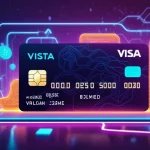XRP Institutional Adoption: Ripple CEO Highlights Privacy as Key Barrier

XRP Institutional Adoption: Ripple CEO Pinpoints Privacy as the Missing Link
Ripple’s quest to transform global finance with the XRP Ledger has hit a wall with institutional players, but CEO Brad Garlinghouse has zeroed in on the one factor that could change everything: privacy. Could this be the key to unlocking mainstream adoption by banks and financial giants?
- Privacy Barrier: Garlinghouse highlights privacy as the critical obstacle for institutional adoption of the XRP Ledger.
- Tech Solutions: Ripple is deploying compliance tools, tokenization features, and privacy tech like ZK-Rollups to address concerns.
- Long-Term Vision: With smart contracts and lending protocols in the pipeline, XRP aims to rival SWIFT, but significant hurdles loom.
The Privacy Problem Holding XRP Back
For over a decade, Ripple has pitched the XRP Ledger as a game-changer for cross-border payments, promising speed and cost savings over clunky traditional systems. The ultimate target? SWIFT, the financial dinosaur that still dominates global banking communication, processing trillions in transactions annually by securely relaying payment instructions between over 11,000 institutions worldwide. Ripple’s ambition isn’t small—replacing or rivaling SWIFT would be a seismic shift in how money moves around the globe. Yet, despite the ledger’s efficiency, the big players—banks, hedge funds, and investment firms—have been dragging their feet. Why? In a candid exchange shared by XRP Validator Vet_X0, Ripple CEO Brad Garlinghouse cut straight to the chase: privacy is the dealbreaker.
[Garlinghouse] replied that it was privacy.
— Vet_X0 on the core barrier to institutional adoption
Let’s unpack this for those new to the space. Institutional adoption means getting major financial entities to integrate blockchain into their daily operations, from payments to asset management. But here’s the rub: the XRP Ledger, like most blockchains, is a public record. Every transaction is visible to anyone with a browser and a bit of know-how. For everyday users, this transparency builds trust—no hidden deals, no shady backrooms. For a bank moving billions, it’s a nightmare. Imagine a competitor tracking your every trade or a hacker spotting a juicy target. Privacy isn’t a luxury for these institutions; it’s a hard requirement. Garlinghouse’s admission, as highlighted in discussions about XRP’s institutional challenges, cuts through the usual blockchain hype, laying bare a fundamental flaw that Ripple must fix to win over the heavyweights.
Ripple’s Tech Arsenal: Building for Banks
Acknowledging this glaring gap, Ripple isn’t just twiddling its thumbs—they’re charging ahead with a suite of tools to make the XRP Ledger a safe bet for institutions. First up are compliance-focused features, a must-have for any entity worried about regulators breathing down their necks. They’ve rolled out Decentralized Identifiers (DIDs), which act like digital passports on the blockchain, verifying who’s who without exposing personal details. Paired with Credentials, these help meet Know Your Customer (KYC) and Anti-Money Laundering (AML) standards—those pesky but necessary rules that keep financial systems legit. Ripple’s also introduced Permissioned Decentralized Exchanges (DEXes), offering controlled trading spaces, and Domains for branding and trust. Together, these turn the ledger from a free-for-all crypto playground into something resembling a regulated sandbox.
Beyond compliance, Ripple is jumping on the tokenization bandwagon with Multi-Purpose Tokens (MPTs). This feature lets users digitize real-world assets—think property deeds, gold bars, or even fine art—and trade them on the XRP Ledger. Tokenization is a booming trend in blockchain, turning illiquid assets into 24/7 tradable tokens, potentially unlocking trillions in value. For institutions, this could mean managing portfolios or settling deals without the usual red tape. If Ripple nails this, they might carve out a serious slice of the tokenized asset market, giving banks a reason to pay attention.
Most crucially, on the privacy front, Ripple is cooking up ZK-Rollups, a tech solution that could be their ace in the hole. For the uninitiated, ZK-Rollups—short for Zero-Knowledge Rollups—bundle thousands of transactions into one compact proof, slashing costs and boosting speed while hiding the nitty-gritty details. Picture it as sending a sealed envelope through a crowded street: everyone sees it moving, but no one knows what’s inside. This approach keeps transactions verifiable on the ledger without exposing sensitive data, a critical step for institutions terrified of public scrutiny. If Ripple delivers, this could shift the narrative around public blockchains and privacy.
Future Foundations: Smart Contracts and Lending
Looking further ahead, Ripple is laying groundwork to rival broader decentralized finance (DeFi) ecosystems. They’re working on lending and borrowing protocols through a standard called XLS-66. This would let users put up real-world collateral—like property or stocks—to secure on-chain loans, a feature that’s powered massive growth on platforms like Ethereum but has been absent from XRP’s toolkit. Then there’s smart contracts via XLS-101, programmable agreements that execute automatically when conditions are met. These aren’t just shiny add-ons; they’re the glue for building complex financial products, from derivatives to insurance, directly on the ledger.
For the security of the network and as a glue for all fixed functions tools we have.
— Vet_X0 on the role of smart contracts in the XRP Ledger
For institutions, this means the XRP Ledger could become a one-stop shop, handling everything from payments to bespoke financial instruments without relying on external systems. But will these upgrades be enough to sway risk-averse banks, or is Ripple just polishing a fancy toy for a skeptical crowd?
Challenging the SWIFT Goliath: A Long Shot?
The dream of dethroning SWIFT has been Ripple’s north star since its founding in 2012, when it set out to streamline cross-border payments. SWIFT’s network, despite its age and inefficiencies, remains the backbone of global finance, trusted by thousands of institutions for its reliability and entrenched infrastructure. Ripple’s pitch—faster, cheaper transactions via blockchain—sounds great on paper. XRP Ledger transactions settle in seconds for pennies, compared to SWIFT’s days-long delays and hefty fees. But let’s not drink the Kool-Aid just yet. SWIFT isn’t standing still; it’s experimenting with blockchain integration through initiatives like its Global Payments Innovation platform. Plus, replacing a system that’s been the standard for decades requires more than tech—it demands trust, scale, and regulatory buy-in that Ripple hasn’t fully secured.
Privacy remains the sticking point, as Garlinghouse noted, and even with ZK-Rollups on the horizon, Ripple’s solutions are unproven at the scale SWIFT operates. Then there’s the competitive landscape. Ethereum, with privacy protocols like Aztec and StarkNet, is also vying for institutional attention in DeFi, while Bitcoin, despite its own public ledger woes, has bolstered privacy with upgrades like Taproot. XRP’s institutional focus fills a niche Bitcoin doesn’t chase—banks aren’t Bitcoin’s target audience—but Ripple must outpace altcoin rivals to stand out. The question lingers: can a blockchain built for transparency ever truly satisfy the secrecy needs of global finance?
Legal and Practical Roadblocks: The SEC Elephant
Let’s cut to the chase on another massive hurdle: Ripple’s legal mess with the U.S. Securities and Exchange Commission (SEC). Since 2020, the SEC has claimed XRP is an unregistered security, a lawsuit that could slap Ripple with fines and cripple its credibility. Institutions are skittish about regulatory uncertainty—why bet on a platform that might get bogged down by penalties or restrictions? Even if Ripple wins, the drawn-out battle, potentially stretching into 2024 with appeals, casts a shadow over adoption. Compare that to competitors like JPMorgan’s Onyx network, which operates with clear regulatory backing, and Ripple’s uphill climb looks even steeper.
Then there’s the global regulatory patchwork. While the EU experiments with blockchain-friendly frameworks like MiCA, the U.S. remains a minefield of ambiguity. Ripple’s strategy hinges on navigating these waters, but one wrong move—or a harsh ruling—could spook institutional partners faster than you can say “compliance audit.” Add to that the sheer inertia of traditional finance, where “if it ain’t broke, don’t fix it” reigns supreme, and Ripple’s vision starts looking more like a marathon than a sprint.
A Decentralization Dilemma
As champions of decentralization, freedom, and disrupting the status quo, we’re rooting for Ripple to shake up the financial world and accelerate blockchain’s rise. The XRP Ledger’s focus on speed and efficiency aligns with the ethos of cutting out middlemen and empowering users. Yet, there’s a devil’s advocate point to chew on: does catering to institutions risk turning XRP into a “bank-friendly” blockchain, sacrificing the user autonomy that decentralization stands for? If Ripple prioritizes permissioned systems and regulatory compliance over open access, are they building a tool for the elite rather than the masses? It’s a tension worth pondering as we watch this space evolve.
And let’s cut the crap—anyone screaming that XRP will “moon” or spiking wild price predictions off this news is either clueless or conning you. Adoption isn’t a slot machine; it’s a grueling, long-term fight against entrenched systems and skeptical gatekeepers. We’re here to drive real understanding, not peddle fantasies.
Key Takeaways on XRP Institutional Adoption
- What’s stopping institutions from adopting the XRP Ledger?
Privacy concerns are the primary roadblock, as banks and financial giants can’t afford their massive transactions to be visible on a public ledger. - How is Ripple addressing privacy for institutional users?
They’re developing ZK-Rollups, a technology that verifies transactions on-chain while keeping sensitive details hidden, offering a shield for big players. - What other tools is Ripple building to attract banks?
Compliance features like Decentralized Identifiers and Credentials for KYC/AML, Multi-Purpose Tokens for asset tokenization, and upcoming lending protocols and smart contracts are all in play. - Can the XRP Ledger realistically replace SWIFT?
It’s an ambitious goal, but with SWIFT’s entrenched trust, massive scale, and Ripple’s unproven privacy solutions at scale, the odds are steep for now. - Why are compliance and regulatory features critical for adoption?
They ensure institutions can operate within legal boundaries, reducing risks of penalties or operational shutdowns when using the XRP Ledger. - How does XRP Ledger’s focus differ from Bitcoin for institutional needs?
While Bitcoin prioritizes decentralization for individual users and struggles with privacy on its public ledger, XRP targets banks with tailored compliance and privacy tools, filling a niche Bitcoin doesn’t aim for.
Ripple’s push for institutional adoption mirrors the broader crypto battle—juggling transparency with confidentiality, innovation with regulation, and bold vision with gritty reality. Garlinghouse’s laser focus on privacy shows he gets what banks need to step into the blockchain arena. Whether Ripple can deliver without tripping over legal landmines or the weight of traditional finance is the million-dollar question. One thing is clear: the XRP Ledger isn’t just playing catch-up; it’s aiming to rewrite the rules of global finance. If they pull it off, even the naysayers might have to tip their hats. For now, we watch, we analyze, and we keep the hype merchants at bay.



